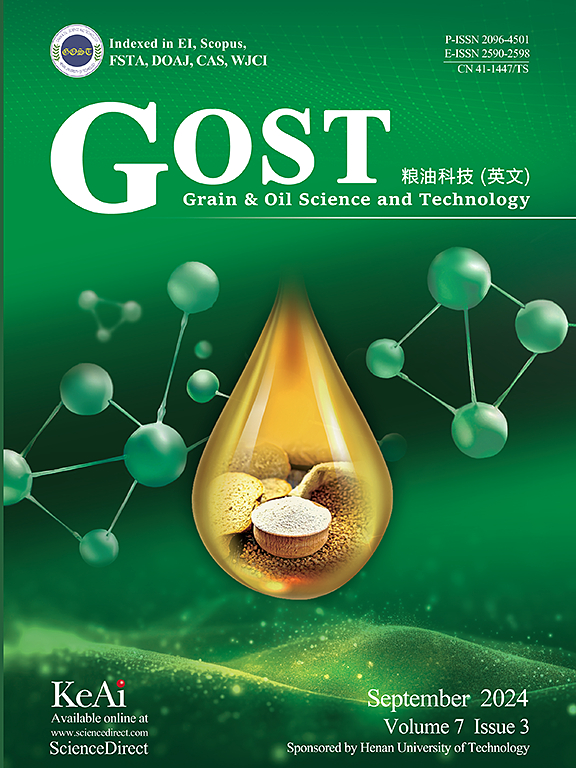Effect of hydrothermal treatments on physicochemical, rheological and nutritional properties of millet: An analytical review
Q2 Agricultural and Biological Sciences
引用次数: 0
Abstract
Millets, nutrient-rich grains packed with complex carbohydrates, dietary fiber, essential proteins, lipids, and antioxidant phytochemicals, are gaining recognition as valuable dietary components. Various processing techniques, including roasting, extrusion, germination, and hydrothermal treatment, have been employed to enhance nutritional bioavailability and consumer appeal. These processing, which involves the application of heat and moisture, induces specific transformations in millet components. Starch undergoes gelatinization, a process in which its crystalline structure is disrupted, leading to increased digestibility and viscosity. Proteins undergo denaturation, altering their structure and potentially improving their digestibility and functionality. Lipids may also undergo modifications, impacting their stability and interactions with other food components. These changes facilitate the release of bioactive compounds such as phenolics, flavonoids, and tannins. These processes effectively reduce anti-nutritional factors, further boosting nutrient availability. This review provides a comprehensive analysis of various hydrothermal methods, including steaming and heat-moisture treatment, and critically evaluates their impact on the physicochemical properties, nutritional profile, and potential health benefits of millet. Steaming, a gentler method involves cooking millet in a steamer basket above boiling water, preserving its delicate texture and nutty flavor while still promoting starch gelatinization and nutrient retention. Heat-moisture treatment, a more specialized technique, involves exposing millet to elevated temperatures and controlled moisture levels, inducing specific changes in starch properties without causing complete gelatinization. This review examines how hydrothermal methods affect the nutritional and functional properties of millet to inspire the development of innovative, nutritious millet-based food products.
水热处理对谷子理化、流变性和营养特性的影响
小米是一种营养丰富的谷物,富含复合碳水化合物、膳食纤维、必需蛋白质、脂质和抗氧化植物化学物质,被认为是有价值的膳食成分。各种加工技术,包括烘焙、挤压、发芽和水热处理,已被用于提高营养生物利用度和消费者的吸引力。这些加工过程涉及热量和水分的应用,引起小米成分的特定转变。淀粉经过糊化,这是一个晶体结构被破坏的过程,导致消化率和粘度增加。蛋白质经过变性,改变其结构,并可能提高其消化率和功能。脂质也可能发生改变,影响其稳定性和与其他食物成分的相互作用。这些变化促进了生物活性化合物的释放,如酚类物质、类黄酮和单宁。这些过程有效地减少了抗营养因素,进一步提高了营养的可用性。本文综合分析了各种水热处理方法,包括蒸法和热湿法,并对其对小米的理化性质、营养成分和潜在健康益处的影响进行了批判性评价。蒸是一种更温和的方法,将小米放在蒸笼中,在沸水之上煮,保留其细腻的质地和坚果味,同时还能促进淀粉糊化和营养保留。热湿处理是一种更专业的技术,它将小米暴露在高温和控制水分水平下,在不导致完全糊化的情况下,诱导淀粉特性的特定变化。本文综述了水热法如何影响小米的营养和功能特性,以启发创新的、营养丰富的小米食品的开发。
本文章由计算机程序翻译,如有差异,请以英文原文为准。
求助全文
约1分钟内获得全文
求助全文
来源期刊

Grain Oil Science and Technology
Food Science
CiteScore
7.30
自引率
0.00%
发文量
69
审稿时长
12 weeks
期刊介绍:
 求助内容:
求助内容: 应助结果提醒方式:
应助结果提醒方式:


